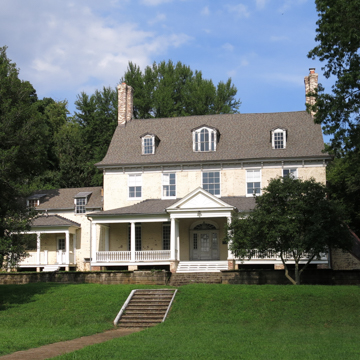Merchant Christopher Lowndes was one of the original town commissioners for the port of Bladensburg, established in 1742. A bustling official county inspection station and tobacco port during the eighteenth century, Bladensburg included a shipyard and ropewalk owned by Lowndes, waterfront wharves, a tannery, taverns, stores, and a number of houses. Lowndes’s own house, called Bostock, or Bostwick, was likely built with his input on the design. The two-and-a-half-story, five-bay original section is symmetrical with a center passage and walls of Flemish-bond brick. Its steeply pitched roof was dated to fall 1745 through dendrochronology. The lower wing on the north side and the large and unusual buttress at the south end wall were probably added around 1793 by Benjamin Stoddard, the second owner.
By the second quarter of the nineteenth century, the port of Bladensburg was in decline, with the Anacostia River too silted in to accommodate large vessels and trade shifting to the port of Baltimore. Around 1904 owners Hettie Parker Kyner and James H. Kyner gave Bostwick and its landscape a Colonial Revival update, including new full-width porches, terraces, boxwood gardens, and updated agricultural buildings. Currently owned by the Town of Bladensburg, Bostwick is used by the University of Maryland’s Graduate Program in Historic Preservation as a study site.











